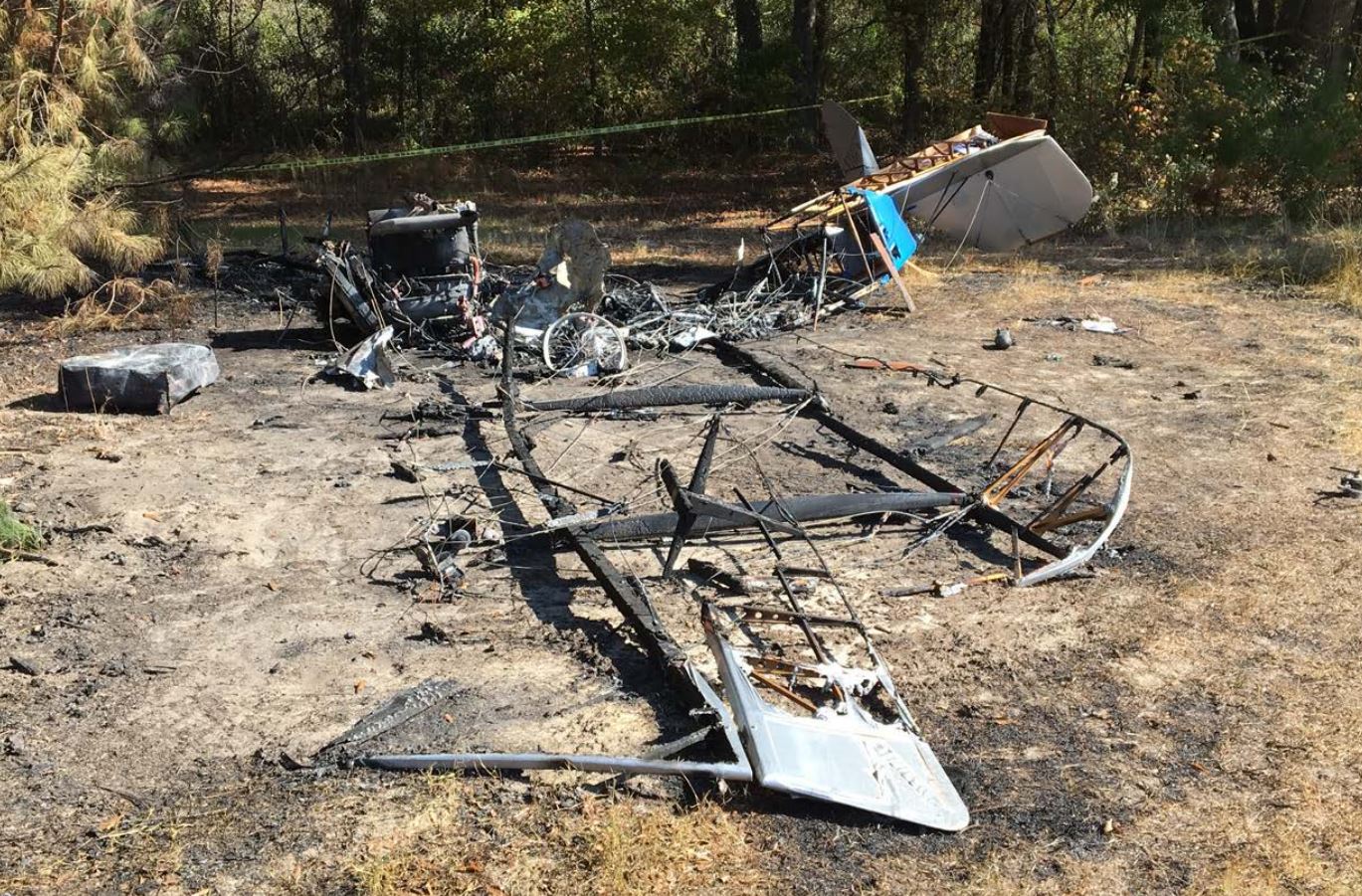
ASN Wikibase Occurrence # 191417
This information is added by users of ASN. Neither ASN nor the Flight Safety Foundation are responsible for the completeness or correctness of this information.
If you feel this information is incomplete or incorrect, you can submit corrected information.
| Date: | Thursday 17 November 2016 |
| Time: | 17:40 |
| Type: |  Curtiss JN-4D Jenny |
| Owner/operator: | Private |
| Registration: | N1662 |
| MSN: | 6062 |
| Year of manufacture: | 2013 |
| Total airframe hrs: | 71 hours |
| Engine model: | Hispano-Suiza E-2 |
| Fatalities: | Fatalities: 2 / Occupants: 2 |
| Aircraft damage: | Destroyed |
| Category: | Accident |
| Location: | Pike County, west of Williamson, GA -
 United States of America United States of America
|
| Phase: | Take off |
| Nature: | Private |
| Departure airport: | Williamson, GA (GA2) |
| Williamson, GA (GA2) | |
| Investigating agency: | NTSB |
| Confidence Rating: |
The airline transport pilot and pilot-rated passenger were departing on a local flight in the experimental amateur-built airplane. During the initial climb after takeoff, a witness heard backfire and popping noises coming from the airplane, followed by visual indications of an in-flight fire. The fire intensified and the airplane disappeared behind a tree line and crashed. The airplane came to rest in an upright position, and fire consumed the airplane forward of the empennage. A 45-inch section of one wood laminate propeller blade was found in a wooded area about 380 ft southwest of the departure end of the runway and about 670 ft from the main wreckage. This section of propeller blade separated in flight, and the ensuing engine vibrations most likely separated fuel and/or oil lines, which resulted in the in-flight fire and a loss of airplane control.
An examination of the propeller pieces revealed that the propeller likely fractured due to excessive vibrational loads associated with engine operation. These loads most likely began well before the accident flight. Documentation revealed that the engine underwent troubleshooting and repair on several occasions for issues related to hesitation, improper cylinder firing, and other anomalies. The copper cladding on the propeller tip was relatively heavy, which also made the propeller particularly susceptible to damage from vibration loads. The leading edge copper strip showed evidence of fatigue crack growth in a plane perpendicular to the leading edge near the tip of the blade. While adding weight at the tip, the leading edge strip and full-width tip sections provided chordwise reinforcement to the wood at the tip. However, once the leading edge strip fractured, the chordwise reinforcement of the wood was reduced, resulting in a spanwise fracture in the wood along the wood grain and subsequent liberation of the tip and trailing edge of the blade.
During the restoration of the airplane, the builders noted that the thickness of the newly-manufactured propeller did not match the length of the hub on the engine, and they elected to reduce the length of the hub rather than purchase a new, thicker propeller that was properly sized to the existing hub. The accident propeller was made for a 180-hp engine instead of the 200-hp engine on the accident airplane. This decision may have contributed to higher stresses on the propeller.
About 16 months before the accident, a crack was found in the copper cladding on the suction side of the fractured propeller blade. The propeller was removed and returned to the manufacturer for repair. After the blade was returned to service, another crack initiated and propagated in the pressure side of the copper cladding from an adjacent repair rivet located closer to the hub from the original crack location. The blade fractured through the copper cladding at the original crack, the crack emanating from the adjacent repair rivet, and through the wood, intersecting the hole in the wood for the rivet associated with the repaired crack and an adjacent repair rivet hole closer to the tip. The repair did not effectively redistribute the loads to prevent further cracking in the area, as evidenced by the rapid formation of a crack at the repair rivet. Furthermore, the additional rivet hole aligned through the same grain of the supporting wood may have further weakened the remaining structure of the propeller as the crack on the pressure side of the leading edge initiated and propagated to merge with the repaired crack on the suction side. Although the primary cause of the fracture was likely the result of excessive engine vibration loads and use of a propeller that was too thin for the hub installed on the engine at the start of restoration, the inadequate repair may have contributed to the accident by providing a false sense of security that the structural integrity of the cracked propeller had been restored.
Probable Cause: The in-flight failure of the propeller due to excessive engine vibration loads and the use of an incorrectly-sized propeller, which resulted in a fatigue crack of the leading edge strip. Contributing to the accident was the inadequate repair of the propeller following a previous crack.
Accident investigation:
 |
|
Sources:
NTSB
FAA register: http://registry.faa.gov/aircraftinquiry/NNum_Results.aspx?NNumbertxt=1662
Location
Images:

Photo: NTSB
Revision history:
| Date/time | Contributor | Updates |
|---|---|---|
| 18-Nov-2016 02:25 | Geno | Added |
| 18-Nov-2016 08:36 | harro | Updated [Aircraft type] |
| 19-Nov-2016 19:12 | Geno | Updated [Narrative] |
| 22-Apr-2018 19:30 | ASN Update Bot | Updated [Time, Nature, Departure airport, Destination airport, Source, Damage, Narrative] |
| 22-Apr-2018 19:50 | harro | Updated [Source, Narrative, Photo, ] |
Corrections or additions? ... Edit this accident description
The Aviation Safety Network is an exclusive service provided by:


 ©2024 Flight Safety Foundation
©2024 Flight Safety Foundation